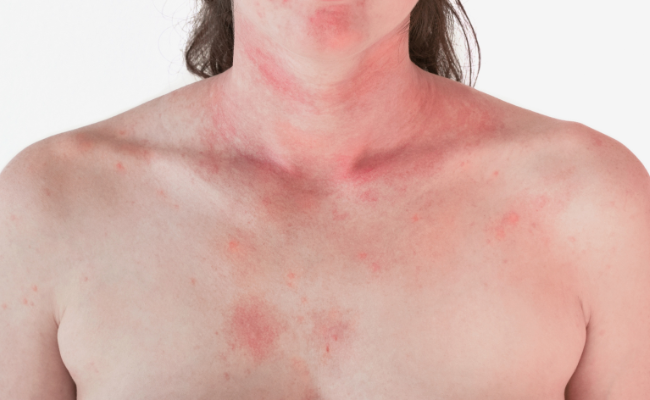How to Treat Stevens Johnson Syndrome?
- January 06, 2024
- No Comments

What is Stevens-Johnson Syndrome?
Stevens-Johnson Syndrome (SJS) is a severe and rare skin reaction triggered by medications or infections. It falls under dermatological emergencies due to its life-threatening nature. SJS involves painful blisters, skin detachment, and affects mucous membranes in the eyes, mouth, and genital areas. It is related to toxic epidermal necrolysis (TEN). SJS and TEN are considered distinct diseases by some or varying severity levels of the same disease by others. SJS, generally less intense than TEN, may affect less than 10% of the body. Both conditions are potentially life-threatening, requiring immediate hospitalization and specialized care.
Why Does Stevens-Johnson Syndrome Occur?
SJS typically occurs as a hypersensitivity reaction to certain medications, most commonly antibiotics, anti-seizure drugs, and nonsteroidal anti-inflammatory drugs (NSAIDs). In some cases, it may also be associated with viral infections, such as herpes or mycoplasma pneumonia. The exact mechanism by which SJS develops is not fully understood, but it is believed to involve an abnormal immune response that leads to widespread inflammation and cell death in the skin and mucous membranes.
How Does Stevens-Johnson Syndrome Manifest?
The early symptoms of SJS may resemble those of a common viral infection, including fever, cough, and body aches. However, within a few days, a distinctive rash begins to appear, often starting on the face and chest and then spreading to other parts of the body. The rash quickly evolves into painful blisters, and the affected skin may begin to peel away in sheets. In severe cases, involvement of the mucous membranes can lead to significant complications, such as difficulty swallowing, breathing, and vision problems.
Diagnosis of SJS is typically based on clinical presentation and may be confirmed through skin biopsy and other laboratory tests. Early recognition and prompt medical intervention are crucial for a positive outcome.
Treatment Solutions for Stevens-Johnson Syndrome:
- Hospitalization: The management of Stevens-Johnson Syndrome usually requires hospitalization, preferably in a specialized burn unit or an intensive care setting. This allows for close monitoring of the patient's condition and immediate intervention in case of complications.
- Withdrawal of Causative Medications: Identifying and discontinuing the medications that triggered SJS is a critical step in the treatment process. This may involve consultation with various healthcare professionals, including dermatologists, allergists, and pharmacists. Stopping the offending medication helps halt the progression of the syndrome.
- Supportive Care: Supportive care is essential to manage the symptoms and complications associated with SJS. This includes pain management, wound care, and the prevention of secondary infections. Topical ointments and dressings may be applied to the affected areas to promote healing and reduce discomfort.
- Intravenous Immunoglobulin (IVIG): In some cases, intravenous immunoglobulin (IVIG) may be administered. IVIG is a blood product that contains antibodies and is believed to modulate the immune response. While its efficacy in SJS is not universally established, it is considered in severe cases or when the progression of the syndrome is not halted by other interventions.
- Ophthalmologic Care: Since SJS can affect the eyes and lead to severe eye complications, ophthalmologic care is an integral part of the treatment plan. Eye lubrication, topical corticosteroids, and sometimes surgery may be required to address ocular issues.
Benefits of Treating Stevens-Johnson Syndrome:
- Reduced Mortality Risk: Timely and appropriate treatment significantly reduces the risk of mortality associated with Stevens-Johnson Syndrome. Prompt medical intervention and supportive care can improve the chances of survival, especially when provided in a specialized medical setting.
- Minimized Complications: Treatment helps minimize the complications associated with SJS, including vision impairment, respiratory distress, and secondary infections. Comprehensive medical care addresses the diverse manifestations of the syndrome and aims to prevent long-term sequelae.
- Pain Relief and Comfort: Supportive care measures, including pain management and wound care, contribute to pain relief and enhanced comfort for individuals undergoing treatment for SJS. These measures are crucial for the overall well-being of the patient.
- Prevention of Secondary Infections: The risk of secondary infections, which can further complicate the condition, is minimized through meticulous wound care and the use of appropriate antibiotics. Preventing infections supports the healing process and reduces the likelihood of additional health issues.
- Preservation of Vision: Ophthalmologic care is vital for preserving vision in individuals affected by SJS. Early intervention and specialized eye treatments help address ocular complications, minimizing the risk of long-term visual impairment.
Comments (0)